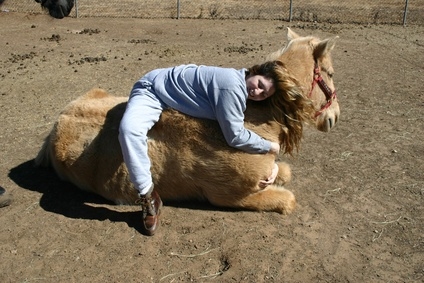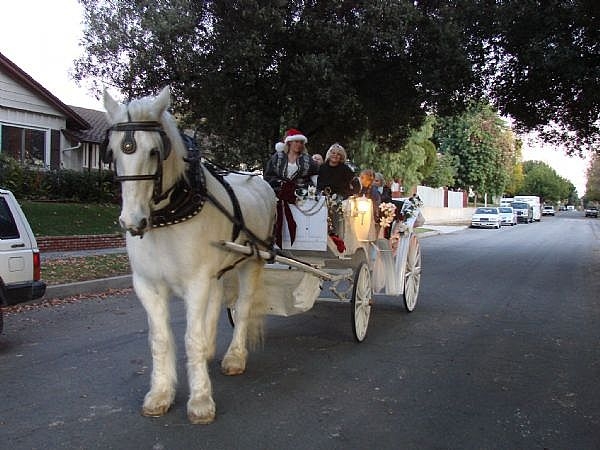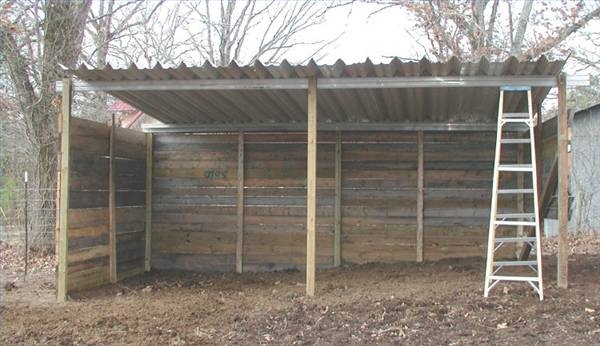
Spelling and usage
In English, the word indicating origin from the Friesland region is typically spelled "Frisian." However, the alternative spelling with an extra "e" is used for Friesian cattle. During much of the history of the Friesch Paarden Stamboek breed registry, most breeders of the horses also were breeders of dairy cattle and the same spelling was also used for both breeds, particularly by English-language breeding societies and registries. However, the spelling "Frisian" is often used in other contexts.
Breed characteristics
A Friesian stallion in show stance
The Friesian is most often recognized by its black coat color, though color alone is not their only distinguishing characteristic. Friesian horses also have a long, thick mane and tail, often wavy, and "feathers"--long, silky hair on the lower legs, deliberately left untrimmed. The official breed rarely has white markings of any kind; most registries allow only a small star on the forehead for purebred registration. Though extremely rare, and not accepted for registration in most cases, Friesians are occasionally chestnut. The Friesian's average height is about 15.3 hands (63 inches or 1.60 m), although it may vary from 14.2 to 17 hands (between 58 in./1.5 m and 68 in./1.7 m) tall at the withers, and mares or geldings must be at least 15.2 hands (1.57 m) tall to qualify for a 'star-designation' pedigree. The breed is known for a brisk, high-stepping trot. The Friesian is considered a willing, active, and energetic horse that is also gentle and docile. A Friesian tends to have great presence and to carry itself with elegance.
The breed has powerful overall conformation and good bone structure, with what is sometimes called a "Baroque" body type. Friesians have long, arched necks and well-chiseled, short-eared, "Spanish type" heads. Their sloping shoulders are quite powerful. They have compact, muscular bodies with strong sloping hindquarters and a low-set tail. Their limbs are comparatively short and strong. To be accepted as breeding stock in the FPS studbook, a stallion must pass a rigorous approval process.
Today, there are two distinct conformation types. The baroque type has the more robust build of the classical Friesian. The modern, sport horse type is finer-boned. Conformation type is judged less important than correct movement, and both types are common, though the Modern type is currently more popular in the show ring than is the Baroque Friesian.
History of the Friesian
A historic image of Alva 113, Friesian stallion
The breed was developed in the province of Friesland in the northern Netherlands, where there is evidence of thousands of years of horse populations, and this breed is said to have descended from the primitive Forest Horse. It is also said that Romans obtained ancestors of the Friesian horse for riding and also took them to England, where the breed type may have influenced the Shire horse, Clydesdale, Fell Pony and Dales Pony.
Ancestors of the modern Friesians were used in medieval times to carry knights to battle. In the 12th and 13th centuries, some eastern horses of crusaders were mated with Friesian stock. During the 16th and 17th centuries, when the Netherlands were shortly linked with Spain, there was less demand for heavy war horses as battle arms changed, Andalusian blood was added, lightening its weight and thereby rendering it more suitable (in terms of less food intake and waste output) for work as a more urban carriage horse. Friesians were also used by riding schools in France and Spain for high-school dressage, and they remain popular today for their gentle temperaments and proud appearance.
The historian Ann Hyland wrote of the Friesian breed:
The Emperor Charles (reigned 1516-56) continued Spanish expansion into the Netherlands, which had its Frisian warhorse, noted by Vegetius and used on the continent and in Britain in Roman times. Like the Andalusian, the Frisian bred true to type. Even with infusions of Spanish blood during the sixteenth century, it retained its indigenous characteristics, taking the best from both breeds. The Frisian is mentioned in 16th and 17th century works... a courageous horse eminently suitable for war, lacking the volatility of some breeds or the phlegm of very heavy ones. Generally black, the Frisian was around 15hh with strong, cobby conformation, but with a deal more elegance and quality. The noted gait was a smooth trot coming from powerful quarters. Nowadays, though breed definition is retained, the size has markedly increased, as has that of most breeds due to improved rearing and dietary methods.
The breed was especially popular in the 18th and 19th centuries, when they were not only in demand as harness horses and for agricultural work, but also for the trotting races then so popular. The Friesian may have been used as foundation stock for breeds such as the Dole Gudbrandsdal, the Norfolk Trotter (ancestor of the Hackney), and the Morgan. In the 1800s the Friesian was bred to be lighter and faster for trotting, however this led to what some owners and breeders regarded as inferior stock, so a movement to return to pureblood stock took place by the end of the century.
A Studbook Society was founded in 1879 by Frisian farmers and land owners who had gathered to found the Friesian Cattle Registry (FRS).[citation needed] The Paardenstamboek ("Stud book") was published in 1880 and initially registered both Friesian horses and a group of heavy warmblood breeds, including East Friesians and Oldenburgers, collectively known as "Bovenlanders." At the time, the Friesian horse was declining in numbers, and being replaced by the more fashionable Bovenlanders, both directly and by crossbreeding Bovenlander stallions on Friesian mares. This had already virtually exterminated the pure Friesian in significant parts of the province in 1879, which made the inclusion of Bovenlanders necessary. While the work of the registry produced a revival of the breed's popularity in the late 19th century, it also resulted in the sale and disappearance of many of the best stallions from the breeding area, and Friesian horse populations dwindled. By the very early 20th century until the number of breeding stallions was down to three.[citation needed] Therefore, in 1906, the two parts of the registry were joined, and the studbook was renamed the Friesch Paarden Stamboek (FPS) in 1907."
Friesian horses are sometimes referred to as "Belgian Blacks"
In 1913, a society known as the Het Friesch Paard was founded, dedicated to the protection and promotion of the breed. By 1915 the group convinced FPS to split the registries back up into two groups. By 1943, the breeders of non-Friesian horses left the FPS entirely to form an entirely separate registry which later became the Koninklijk Warmbloed Paardenstamboek Nederland (Royal Warmblood Studbook of the Netherlands (KWPN).
Displacement by petroleum-powered farm equipment on dairy farms also was a threat to the survival of Friesian horse. The last draught function performed by Friesians on a significant scale was to work on farms that raised dairy cattle. World War II slowed down the process of displacement, allowing the breed's population and popularity to rebound. Important in the initial stage of the breed's rebound was the circus of the Strassburger family, who, having fled Nazi Germany for the Low Countries, discovered the show qualities of the breed and demonstrated its abilities outside of its local breeding area during and after the Nazi occupation.[citation needed]
Today, there are three modern bloodlines: Tetman 205, Age 168, and Ritske 202. Each of these sires trace their blood to Paulus 121, who was born in 1913 and entered into the Studbook in 1916. He in turn can be traced back three more generations to the original 19th century Studbook foundation sire, Nemo 51, born in 1885. All purebred Friesians trace back to these bloodlines.
The Friesian today
A Friesian in surcingle, showing at the trot
From the latter part of the 20th century until the present, demand for purebreds, particularly the "Modern style" finer-boned, taller, more agile version of the Friesian increased, so breeders have bred both purebreds and a lighter-weight crossbred horse with valued characteristics, resulting in the Frieisan cross and Friesian Sporthorse.
Friesian horses are popular in both Europe and the United States, and are often used today for Dressage competition, pleasure riding, and driving. Friesian horses can do well in dressage competition due to the breed's movement, trainability, appearance, power, and body control.
Closeup of the head
The Friesian also remains popular as a carriage horse, as it is a powerful horse and its high-stepping action is eye-catching. It is particularly popular in competitions that require the driving of a team, partly because of its movement and disposition, and partly because it is easy to match teams of black horses. Friesians are also good all-around horses, used for showing, driving, and general riding, and are also used as circus horses.
Due to its flashy appearance, the Friesian has become popular in the film industry. The breed owes much of its current popularity to the appearance of the Friesian stallion Goliath (real name: Othello) in the 1985 film, Ladyhawke, which ignited a worldwide interest in these horses. Films such as Eragon, The Mask of Zorro, Alexander and The Chronicles of Narnia have also featured Friesian horses. An episode of the popular TV series Lost featured a Friesian/Saddlebred cross. Though they are of dramatic appearance, sometimes their use in dramatizations of actual historical events is of dubious accuracy, given that the breed as it is known today only came into being within the last 400 to 600 years.
References
^ FPS Studbook
^ "Friesian Encyclopedia" Web page accessed August 24, 2007
^ Hyland, Ann The Warhorse 1250-1600 UK:Sutton Publishing, 1998, pp 2-3
^ Historic Notes Web site accessed August 24, 2007.
^ a b c d "History of the Friesian Horse" Friesian Horse Society Web page accessed September 1, 2008
External links
Wikimedia Commons has media related to: Friesian horse
Friesch Paarden-Stamboek Netherlands-based organisation that works globally with local and regional organisations to 'protect the interests of the breed'
Friesian Horse Association of North America North American representative of the FPS studbook.
FPZV Friesenpferde Zuchtverband e. V. German based Friesian registry
Friesian Horse Society North American representative of the FPZV
International Friesian Show Horse Association USEF recognized representative of the Friesian breed in the show ring.
v d e
Equine
Equine science and
management
Equine anatomy Equine nutrition Horse behavior Horse care Horse breeding Equine conformation Equine coat color Horse gait
Equestrianism
and sport
Glossary of equestrian terms Horse tack Bit Bridle Saddle Harness English riding Western riding Driving Horse training Horse racing Equestrian at the Summer Olympics Horse show Equitation
Evolution and history
Domestication In warfare In the Middle Ages Horses in East Asian warfare History of the horse in South Asia Horses in the Napoleonic Wars Horses in World War I Horses in World War II
Horse breeds, types
and other Equidae
Horses
List of horse breeds Wild horse Feral horse Stock horse Gaited horse Draft horse Warmblood Sport horse
Other Equus
Donkey Zebra Onager
Hybrids
Hinny Mule Zebroid
Category: Equidae
Categories: Animal breeds originating in the Netherlands | Horse breeds | ALBC Conservation Priority BreedsHidden categories: All articles with unsourced statements | Articles with unsourced statements from September 2008
 How to Break a Horse to Ride
How to Break a Horse to Ride
How to Br
How to Break a Horse to Ride
How to Break a Horse to Ride
How to Br
 How to Make Your Horse Love You
How to Make Your Horse Love You
How to
How to Make Your Horse Love You
How to Make Your Horse Love You
How to
 How to Harness a Horse
How to Harness a Horse
How to Harness
How to Harness a Horse
How to Harness a Horse
How to Harness
 How to Hook Up a Horse Harness to a Cart
How to Hook Up a Horse Harness to a Cart
How to Hook Up a Horse Harness to a Cart
How to Hook Up a Horse Harness to a Cart
 How to Build a Single Horse Barn
How to Build a Single Horse Barn
How t
How to Build a Single Horse Barn
How to Build a Single Horse Barn
How t
Copyright © 2005-2016 Pet Information All Rights Reserved
Contact us: www162date@outlook.com